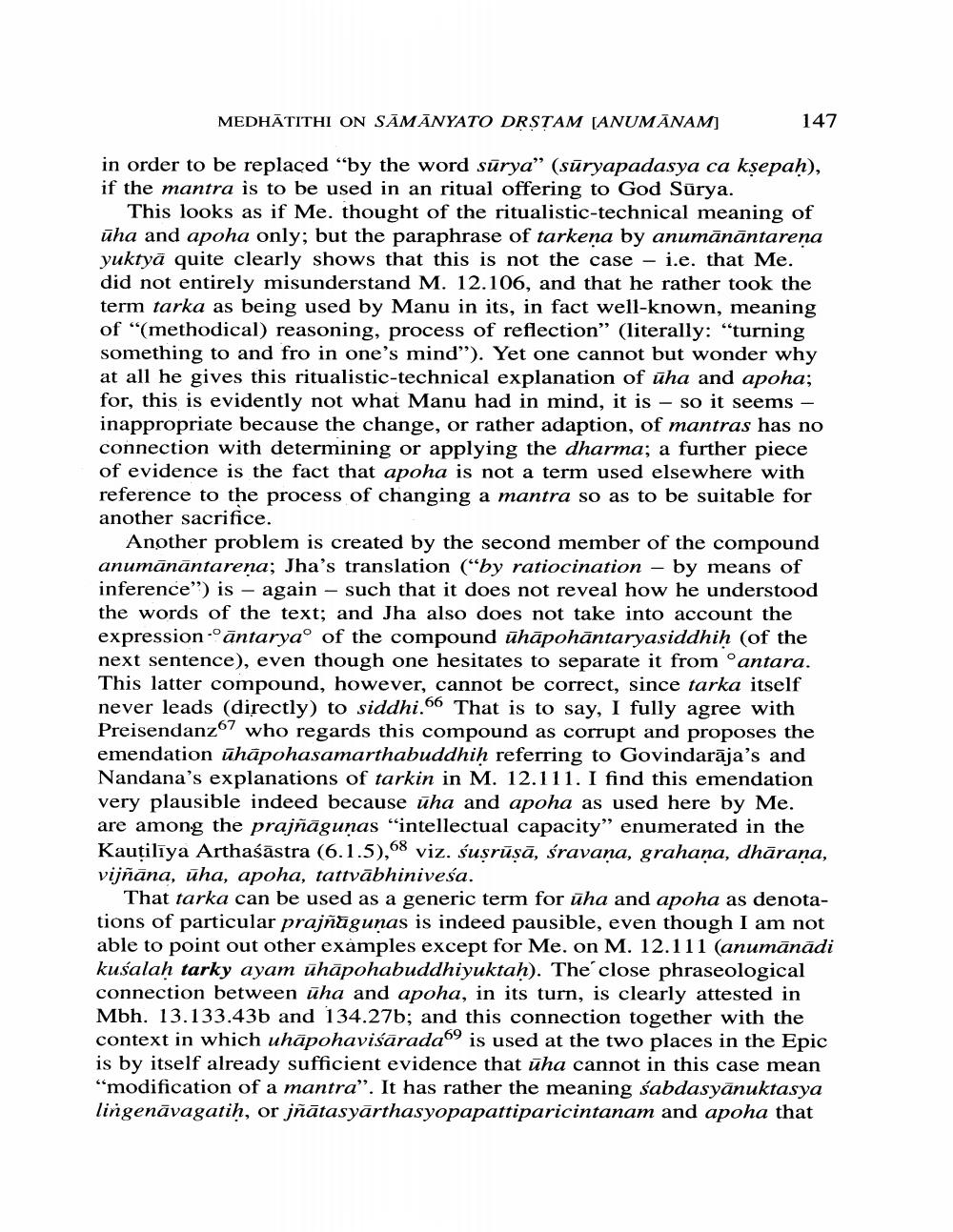________________
MEDHĀTITHI ON SĀMĀNYATO DRSTAM (ANUMĀNAM]
147
in order to be replaced "by the word sūrya" (sūryapadasya ca ksepah), if the mantra is to be used in an ritual offering to God Surya.
This looks as if Me. thought of the ritualistic-technical meaning of ūha and apoha only; but the paraphrase of tarkena by anumānāntarena yuktyā quite clearly shows that this is not the case - i.e. that Me. did not entirely misunderstand M. 12.106, and that he rather took the term tarka as being used by Manu in its, in fact well-known, meaning of “(methodical) reasoning, process of reflection" (literally: "turning something to and fro in one's mind"). Yet one cannot but wonder why at all he gives this ritualistic-technical explanation of ūha and apoha; for, this is evidently not what Manu had in mind, it is – so it seems – inappropriate because the change, or rather adaption, of mantras has no connection with determining or applying the dharma; a further piece of evidence is the fact that apoha is not a term used elsewhere with reference to the process of changing a mantra so as to be suitable for another sacrifice.
Another problem is created by the second member of the compound anumānāntarena; Jha's translation ("by ratiocination – by means of inference") is – again - such that it does not reveal how he understood the words of the text; and Jha also does not take into account the expression -°āntarya° of the compound ühāpohāntaryasiddhiḥ (of the next sentence), even though one hesitates to separate it from oantara. This latter compound, however, cannot be correct, since tarka itself never leads (directly) to siddhi.66 That is to say, I fully agree with Preisendanz67 who regards this compound as corrupt and proposes the emendation ühāpohasamarthabuddhiḥ referring to Govindarāja's and Nandana's explanations of tarkin in M. 12.111. I find this emendation very plausible indeed because üha and apoha as used here by Me. are among the prajñāgunas “intellectual capacity" enumerated in the Kautilīya Arthaśāstra (6.1.5),68 viz. susrūsā, śravana, grahana, dhāraņa, vijñāna, üha, apoha, tattvābhinivesa.
That tarka can be used as a generic term for üha and apoha as denotations of particular prajñāgunas is indeed pausible, even though I am not able to point out other examples except for Me. on M. 12.111 (anumānādi kuśalah tarky ayam ūhāpohabuddhiyuktah). The close phraseological connection between üha and apoha, in its turn, is clearly attested in Mbh. 13.133.43b and 134.27b; and this connection together with the context in which uhāpohaviśārada69 is used at the two places in the Epic is by itself already sufficient evidence that üha cannot in this case mean "modification of a mantra". It has rather the meaning sabdasyānuktasya lingenāvagatih, or jñātasyārthasyopapattiparicintanam and apoha that




